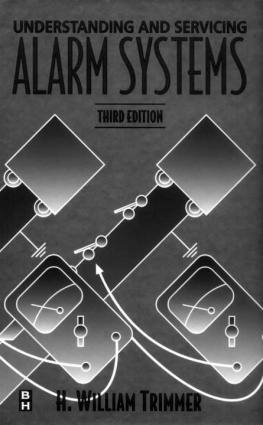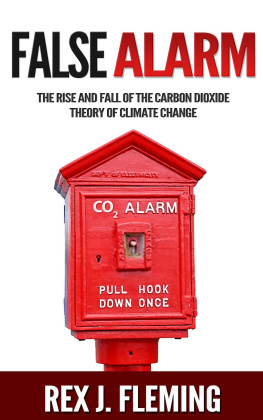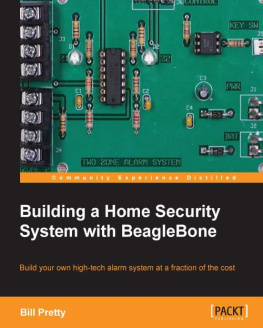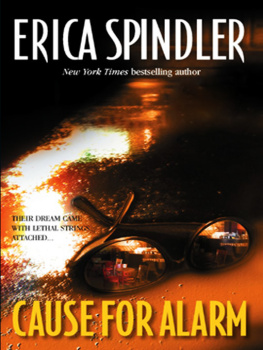H. WILLIAM TRIMMER













To Barbara, my wife
Contents
xi
Preface to the
Third Edition
Changes abound in our industry, yet a significant problem remains to haunt us-false alarms. As more people come to appreciate the value of an alarm system, for both home and for business, the numbers grow. In spite of progress in reducing the false alarm rate in some cities, this number is overshadowed by the growing totals.
Police, Sheriff, and other law enforcement agencies have been-and continue to be-strapped for manpower. They face increasing demands on their time from many quarters and false dispatches (i.e. responses to false alarms are just an additional thorn in their sides).
I think we all understand that alarm systems aid in the apprehension of burglars and help reduce this crime rate. But as false alarm incidences rise it dilutes the effectiveness of alarm systems and gives the impression of decreasing bang-for-the-buck for law enforcement departments. Fortunately there are people in the alarm industry working diligently with law enforcement agencies to combat this problem.
Why discuss all this? To underline the need for each one of us in the alarm industry to do his or her best to properly apply, install, and maintain alarm equipment and systems to prevent false alarms in the first place. This requires a technical understanding of alarm equipment and systems and is what this book is all about.
Yet this is not enough. As in many other endeavors the 80/20 rule applies: eighty percent of the problems come from twenty percent of the installations and, of these, the majority is caused by subscriber error. We need to better train our subscribers and users. The chapter on "Dealing Effectively with Customers" will provide guidance in this important effort.
If we in the alarm industry fail to rise to the challenge of reducing false alarms the baton will be taken from us. We will be faced with ever-encumbering ordinances, fees and fines, licensing requirements, and diminishing law enforcement response. I am not suggesting that these are bad. What I am saying is that we need to work cooperatively to solve this problem and to avoid knee-jerk responses that provide only heartburn for all. I have faith in this industry. I hope you too will be diligent and take pride in your work.
PART ONE
In any book, seminar, or training program the first problem to be resolved is where to begin. Newcomers will be lost without simple, introductory material. Yet, this same material will bore "old hands"
In this book, for the benefit of newcomers, Part One introduces sufficient, basic electrical theory to understand most alarm circuits. I do not go into electronics as I believe only the most advanced alarm people will need or even want to know what goes on inside a solid-state alarm control unit or a motion detection device. What you do need to know is how a device works in general, how it gets hooked up, and, mainly, how to service it. These are what I have attempted to explain.
Even the more experienced person is well advised to review Chapter 1 on "Basic Electricity" and will benefit by reviewing Chapter 2 on "Test Equipment." Many professionals are familiar with only one or two test devices. This chapter will broaden your understanding and may introduce you to newer, better devices.
1 Basic Electricity
Before we get into the details of troubleshooting alarm systems, we must understand a few of the basics about electricity. Without such an understanding, any troubleshooting would simply be a matter of following a memorized or written procedure without knowing what is happening or why. If you run out of standard procedures without finding the problem, you will have no idea of what to do next. Going through a list also wastes time. With a little understanding you can often go directly to the source of the problem that might otherwise be the last procedure on a list. Another important reason for familiarity with the basics of electricity is to understand how various test and measuring devices work and how they affect the alarm system being tested. Without this knowledge, the test instrument might be incorrectly interpreted, wasting a lot more of your time.
When studying electricity it is not necessary to go into electron theory, although some books begin with this topic. Let's omit as much theory as possible and get down to the practical matters that will help you to understand alarm work.
1.1 ELEMENTS OF A SIMPLE ELECTRIC CIRCUIT
Let's start with a battery since most people are familiar with them. We have batteries in flashlights, portable power tools, cars, trucks, and most alarm systems. There are various kinds of batteries, which will be covered later. First, think of a battery as one of the sources of electric energy. Another source of electricity often used in alarm work is the wall outlet. Here, the electricity is generated at a large power plant and comes over wires to the house or building where the alarm system is located.
Now, with electricity available to us, either from a battery or a wall outlet, we want it to do something useful for us. Several functions of electricity are to light a bulb to enable us to see in dark places, to run a drill motor so we can make holes to run alarm wiring, to ring bells to scare away intruders, to operate a TV for entertainment, and many more things. In each case, however, it does something useful that we or somebody else wants done. Each of these devices can be thought of as a user of electricity. We call each of these an "electrical load" or just simply a "load," the second element in simple electrical circuits.


















